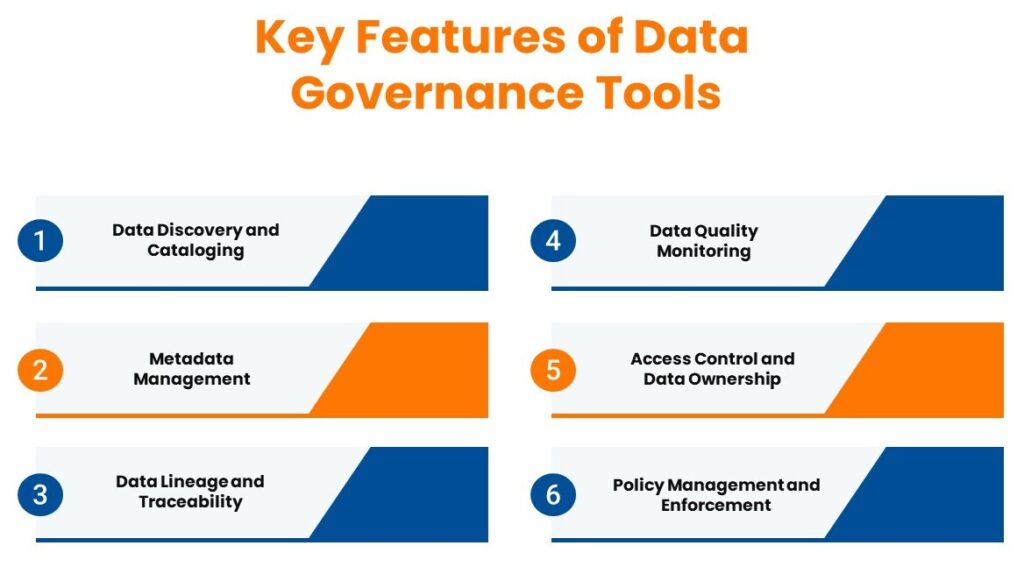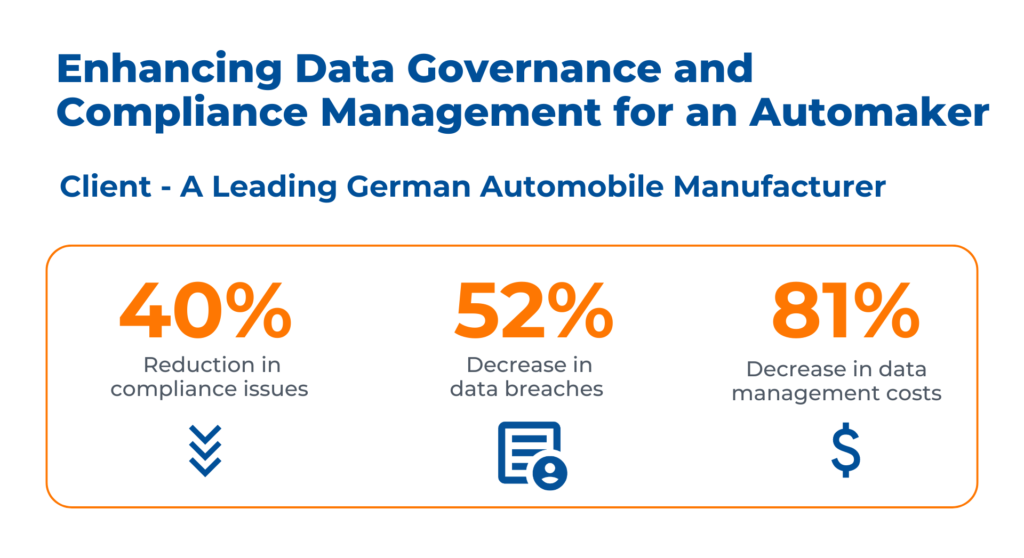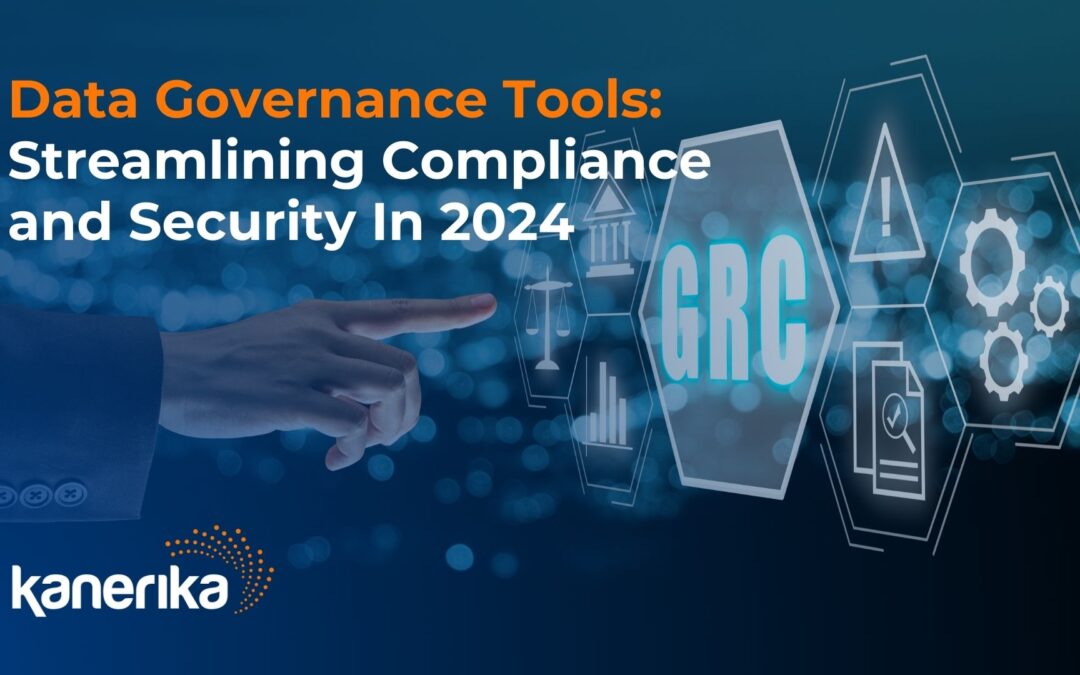Managing the vast amount of data that’s generated every day is one of the biggest challenges for organizations these days. According to a Gartner survey, more than 50% of enterprises said that they have established a robust data governance framework while 32% are executing a roadmap towards implementing one. The report also shows that compliance audits (52%) and data loss (21%) are the most common data governance issues they face. These numbers highlight the criticality of having a sound data governance strategy in place. Data governance tools play an important role in ensuring effective data governance.
By offering essential features like data quality assessments, compliance checks, and metadata management, data governance tools help businesses safeguard their data and make strategic decisions. Tools like Collibra and Atlan ensure that enterprises don’t just collect data but manage it intelligently and ethically. With numerous data governance tools available today, how can you choose the right one that aligns with your organization’s requirements? For this, we need to carefully assess the features and use cases of these tools and determine what suits best for your business.
Table of Contents
- What Are Data Governance Tools?
- Important Features of Data Governance Tools
- 10 Best Data Governance Tools You Should Know in 2024
- Factors to Consider for Choosing the Right Data Governance Tool
- Benefits of Data Governance Tools
- Secure Your Data with Kanerika’s Next-Gen Data Governance Solutions
- FAQs
What Are Data Governance Tools?
Data governance tools act as the control center for your organization’s data. Imagine a company with customer information scattered across spreadsheets, databases, and marketing tools. These tools help catalog this data, ensuring everyone knows where it is and what it means. They also enforce data quality rules, like ensuring addresses are formatted correctly. They keep your data organized, ensure it is accurate, and provide clear data definitions for everyone using them. This empowers businesses to make data-driven decisions with confidence.
These are software solutions designed to help organizations manage, secure, and maintain the quality of their data. By providing features like data cataloging, metadata management, data lineage tracking, and compliance monitoring, they ensure that data is used efficiently and aligns with regulatory requirements.
Important Features of Data Governance Tools
Data governance tools go beyond simply storing data; they empower you to discover, understand, manage, and secure your valuable information assets. Below are the key features that make data governance tools so crucial:
1. Data Discovery and Cataloging
These tools scan and identify datasets across an organization’s infrastructure. Data cataloging involves organizing the discovered data into a searchable and understandable format, allowing users to find relevant data easily. Data discovery and cataloging features function as the digital librarian, creating a comprehensive inventory of your organization’s data assets. For example, Collibra’s cataloging feature helps create a comprehensive inventory for users to search, analyze, and manage efficiently.
2. Metadata Management
Data itself is valuable, but without context, it can be meaningless. Metadata management features act like data labels, providing additional information about your data sets. It involves collecting and managing metadata (data about data) to provide context and ensure better data understanding. Metadata includes details like the source, structure, and usage, helping users identify data’s purpose and sensitivity. It allows AI-driven tools to automate tasks and streamline workflows.
3. Data Lineage and Traceability
Data doesn’t just appear in reports or dashboards as it is. It goes through a transformation journey. Data lineage and traceability features track this journey, mapping out the origin and flow of your data. Data lineage tracks data flow through various systems, helping understand its origin and transformations. Traceability ensures that any changes in data are audited and documented. This is vital in industries requiring strict compliance, as it provides a historical trail of data changes.

4. Data Quality Monitoring
These tools monitor data for accuracy, consistency, and completeness, providing alerts or remediation workflows when issues arise. Data governance tools equip you with powerful data quality management features. These tools can automatically identify inconsistencies, missing values, or duplicate entries within your data sets. Through processes like data profiling, data cleansing, and data validation, these tools maintain a high quality of data for decision-making purposes.
5. Access Control and Data Ownership
Establishing data ownership assigns responsibility for specific datasets, while access control ensures that only authorized users can interact with sensitive data. Role-based permissions restrict data access according to job roles, helping meet data privacy regulations like GDPR and HIPAA. These tools can also implement encryption measures, adding an extra layer of protection for your valuable data assets.
Also Read- Data Governance in Healthcare: The Key to Unlocking Better Patient Care
6. Policy Management and Enforcement
Policies define how data should be handled, accessed, and shared. Data governance tools help you establish these policies electronically, outlining data ownership, usage guidelines, and retention schedules. This ensures everyone within the organization adheres to the same data protocols. They enforce these policies across datasets, ensuring compliance with industry regulations and internal guidelines. Policy management often includes automated enforcement features, reducing the manual burden on compliance teams.
Case Study: Enhancing Data Governance and Compliance Management
The client is a leading automobile manufacturer in Germany. They were struggling to identify and manage sensitive information across diverse sources, leading to potential breaches in customer privacy. Kanerika resolved their issues by:
- Establishing a Governance system to identify and track PHI and PCI-sensitive data, enhancing security and compliance
- Developing mechanisms for connecting various data types, ensuring comprehensive sensitive information management
- Customizing data patterns to monitor sensitive data, tailored to organizational needs, supporting enhanced data analytics

10 Best Data Governance Tools You Should Know in 2024
1. Collibra
A widely used platform focusing on data governance and compliance management. Collibra streamlines the cataloging and management of enterprise data.
Key Capabilities
- Advanced metadata management and cataloging
- Centralized policy management for compliance
- Automated data lineage tracking and reporting
Use Cases
- Enhancing data stewardship and compliance
- Data discovery and self-service analytics
- Unifying data assets across the enterprise
2. Informatica
An enterprise-grade solution with powerful suite of tools that manage data quality, governance, and integration across complex IT landscapes.
Key Capabilities
- Comprehensive data catalog and discovery features
- Data quality monitoring and anomaly detection
- Integrated metadata management
Use Cases
- Supporting analytics and data science initiatives
- Governing sensitive data for compliance requirements
- Managing master data across multiple business domains
3. Alation
This tool is designed for automation-focused data governance, using AI and ML for metadata management and quality documentation.
Key Capabilities
- Centralized policy management
- Automated data stewardship and classification
- Business glossary management for standardization
Use Cases
- Policy enforcement through centralized controls
- Ensuring consistent metadata definitions
- Improving collaboration across data teams
4. IBM Data Governance
Part of the IBM Cloud Pak for Data suite, offering a comprehensive approach to data governance for structured and unstructured data.
Key Capabilities
- Comprehensive data lineage and traceability
- Automated data quality assessment and monitoring
- Advanced analytics and AI integration
Use Cases
- Achieving regulatory compliance in banking and finance
- Managing data governance for large-scale healthcare organizations
- Automating data lineage and quality assessment
5. Atlan
An open-source metadata platform designed for scalability and integration with various data ecosystems. It offers self-service data management, making governance easier through collaboration and automation.
Key Capabilities
- Policy management with centralized controls
- Self-service data discovery and cataloging
- AI-driven data quality monitoring and anomaly detection
Use Cases
- Enhancing GDPR compliance for sensitive customer data
- Automated metadata management for data teams
- Improving access controls for financial data
6. Apache Atlas
An open-source data governance and metadata tool that integrates well with big data platforms. It is specifically designed for Apache Hadoop environments, providing a central repository for data lineage and governance information.
Key Capabilities
- Metadata repository for data assets
- Centralized governance policy enforcement
- Lineage tracking and classification
Use Cases
- Managing data assets in Hadoop environments
- Building data lineage reports for big data analytics
- Creating a unified governance layer across data lakes
7. erwin Data Intelligence
An enterprise data governance solution that focuses on automating data governance workflows and fostering business user collaboration. It offers metadata management, data lineage tracking, and compliance support.
Key Capabilities
- Data mapping and lineage analysis
- Metadata management and policy enforcement
- Integration with various ETL tools
Use Cases
- Simplifying data mapping for ETL processes
- Achieving data transparency for compliance
- Supporting impact analysis for enterprise data models
8. OvalEdge
A modern data governance platform that combines data discovery with access controls. It is a data governance solution designed for small and medium-sized enterprises, offering a user-friendly interface and pre-built workflows
Key Capabilities
- Centralized data catalog and metadata management
- Advanced access control and role-based security
- Automated data lineage reporting
Use Cases
- Data classification and policy enforcement for sensitive information
- Unifying data cataloging across disparate sources
- Role-based access for improved data security
9. Ataccama
A self-driven data management platform which emphasizes ease of use and automation. It incorporates data governance functionalities, focusing on data quality, data cleansing, and data mastering.
Key Capabilities
- Automated data quality management and anomaly detection
- Customizable business rule assignment
- Integration with major cloud and big data platforms
Use Cases
- Simplifying metadata management for data professionals
- Automating business rule assignments to improve data quality
- Building centralized data governance solutions across the enterprise
10. Talend
Part of the Talend Data Fabric platform, offering a data catalog that integrates with Talend’s data integration and data quality tools. It offers end-to-end data governance with its extensive suite of data integration tools.
Key Capabilities
- Unified data catalog and integration platform
- Automated data quality monitoring and cleansing
- Scalable data pipeline management
Use Cases
- Integrating data from multiple sources into a unified platform
- Ensuring high data quality for analytics
- Supporting business teams with a comprehensive data catalog
Factors to Consider for Choosing the Right Data Governance Tool
Selecting the right data governance tool is crucial for organizations looking to improve data quality, ensure regulatory compliance, and empower data-driven decision making. Here are some key factors to consider when making this important choice
1. Understanding Your Organization’s Needs
Data Volume and Complexity: The amount and type of data your organization manages significantly impacts the tool selection process. Highly scalable solutions are essential for handling large and intricate data landscapes, while organizations with smaller data volumes might prioritize user-friendliness and cost-effectiveness.
Existing Data Landscape: Does your data reside solely on-premise, in the cloud, or in a hybrid environment? Choose a tool that seamlessly integrates with your existing infrastructure to avoid data silos and ensure efficient data governance across all sources.
Data Governance Goals: Clearly define your primary objectives for data governance. Are you aiming to improve data quality for better analytics? Ensure regulatory compliance with data privacy laws? Or perhaps a combination of these goals? Aligning your tool selection with these priorities will lead to a more effective solution.
2. Tool Features and Functionality
Data Cataloging: An effective data governance tool should offer robust data cataloging features. This includes enabling easy discovery, search, and comprehension of your data assets. Users should be able to locate relevant data efficiently, understand its meaning and usage, and trust its accuracy.
Data Lineage: Tracking the flow of data from its origin to consumption is critical for maintaining data quality and resolving potential issues. Look for tools that provide comprehensive data lineage functionality, allowing you to identify the source of data, its transformations throughout various processes, and its final destination within the organization.
Data Quality Management: Data quality is the cornerstone of data-driven decision making. Choose a tool that offers data profiling, data cleansing, and data monitoring capabilities. Data profiling helps understand the structure and characteristics of your data, while data cleansing removes errors and inconsistencies. Continuous data monitoring ensures data quality remains high over time.
Data Security and Privacy: Protecting sensitive data is paramount. Evaluate tools that offer robust security features like access controls, encryption (both at rest and in transit), and data masking functionalities. These features safeguard your data from unauthorized access, breaches, and potential misuse.
Collaboration and Workflow Automation: Effective data governance thrives on collaboration among data stewards and stakeholders. Look for tools that facilitate communication and information sharing. Additionally, consider tools that automate routine tasks associated with data governance, such as data lineage mapping or data quality checks. This streamlines workflows and improves overall efficiency.
3. Usability and Scalability Considerations
User Interface: A user-friendly interface is crucial for ensuring widespread adoption of the data governance tool. Evaluate the tool’s ease of use for individuals with varying technical skills. Intuitive interfaces reduce training needs and encourage active participation from all relevant users.
Scalability: Your data governance needs will evolve over time. Choose a tool that can scale effectively to accommodate growth in data volume and complexity. Ensure the tool can handle potential increases in users, data sources, and data governance requirements as your organization expands.
Integration Capabilities: Evaluate how well the data governance tool integrates with your existing data management and analytics platforms. Seamless integration ensures data flows smoothly throughout your data ecosystem, eliminates data silos, and fosters a unified approach to data governance.
4. Vendor Support and Training
Support Options: Reliable vendor support is essential for successful data governance tool implementation. Evaluate the level of support offered by the vendor, including readily available training resources, ongoing technical assistance, and customer service responsiveness. A strong support system ensures you can get the most out of the tool and address any challenges swiftly.
Implementation and Training Costs: Factor in the costs associated with implementing the data governance tool and training your users. This might include initial setup fees, customization costs, and training program expenses. Consider vendors that offer comprehensive training materials and user support options to minimize these costs in the long run.
5. Total Cost of Ownership (TCO)
Licensing Fees: Carefully evaluate the upfront licensing costs associated with the data governance tool. Additionally, consider any ongoing subscription fees or maintenance charges that might factor into the total cost of ownership (TCO).
Implementation Costs: Don’t overlook the costs involved in implementing and customizing the data governance tool to fit your specific needs. This might include professional services fees for setup and configuration, as well as any additional costs associated with data migration or integration with existing systems.
Return on Investment (ROI): While there are initial costs associated with implementing a data governance tool, the long-term benefits are substantial. Evaluate the potential return on investment (ROI) by considering cost savings from improved data quality, increased efficiency in data-related tasks.
Benefits of Data Governance Tools
1. Improved information quality and reliability
Data governance tools establish processes and standards for creating, managing, and using data. This ensures that data is accurate, consistent, and complete throughout its life cycle. Moreover, built-in qualities like data profiling, data cleansing, and data monitoring within these tools help to detect any issues in the quality of data proactively, making the subsequent analysis and decision-making more reliable.
2. Enhanced Data Security and Regulatory Compliance
Data governance tools are crucial for protecting sensitive information. Access controls, encryption, and data masking can prevent unauthorized access, breaches of security, and potential misuse of information. Also, they assist organizations in complying with different privacy laws, such as GDPR or CCPA, through a clear audit trail depicting the origin and usage of particular records.
3. Increased transparency of Data and collaboration:
Transparency requires an organization-wide understanding of data, its ownership, and usage. Data governance tools include centralized storage repositories (data catalogs), which consolidate all metadata concerning an enterprise’s digital assets. This enables users to find needed information easily while promoting effective collaboration. This transparency builds trust in data and encourages knowledge sharing among data stewards and business users.
4. Better Decision-Making and Business Insights
Better information quality, improved security measures, and updated transparency levels regarding handling organizational data help gain insights from vast data. By ensuring access to reliable and trustworthy data, these tools enable data-driven insights that can inform strategic planning, optimize business processes, and ultimately lead to improved business outcomes.
Secure Your Data with Kanerika’s Next-Gen Data Governance Solutions
Kanerika is your go-to partner for implementing a strong data governance strategy tailored to your business needs. Our comprehensive approach ensures a thorough understanding of your data estate, enabling us to deploy the most advanced governance tools available. By doing so, we guarantee high-quality, secure data that meets compliance standards like GDPR and HIPAA.
Our ISO 27001 and 27701 certifications underscore our dedication to safeguarding sensitive information, ensuring that your organization’s data remains protected from unauthorized access. With a team of experienced data professionals ready to tackle any data challenges, we aim to optimize your data operations for maximum business efficiency and improved performance.


















